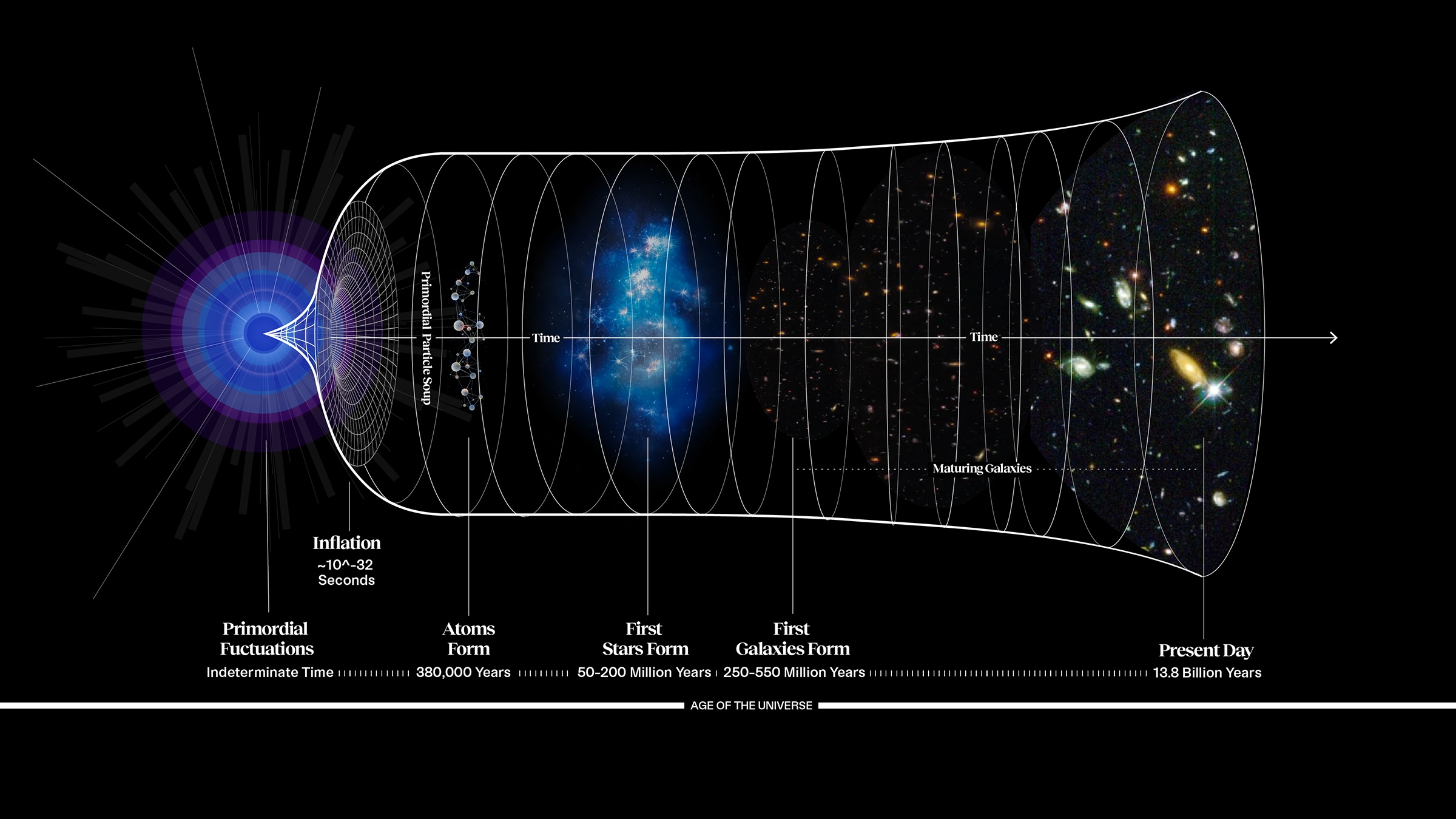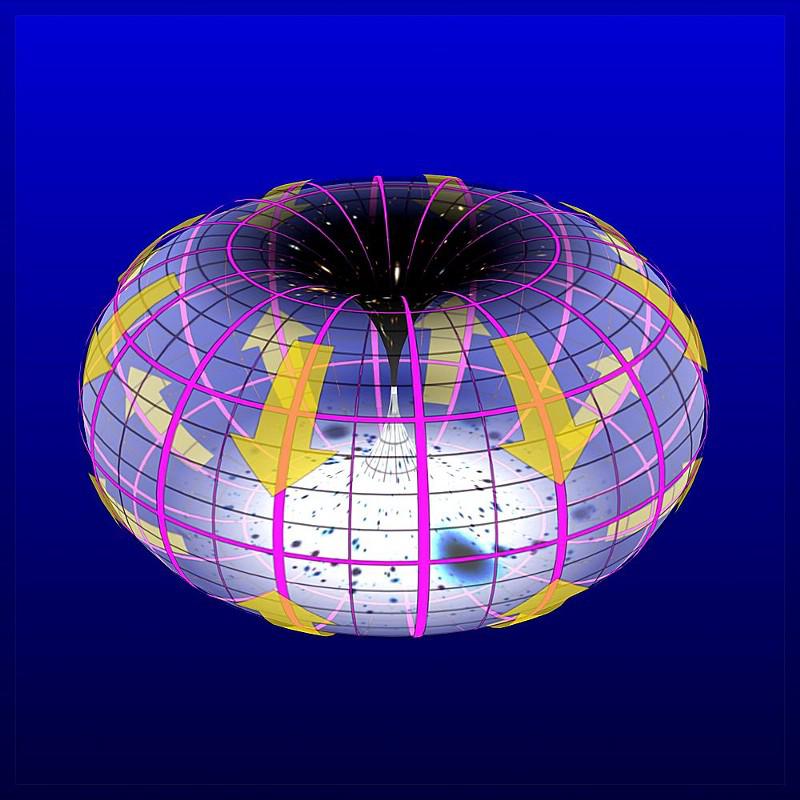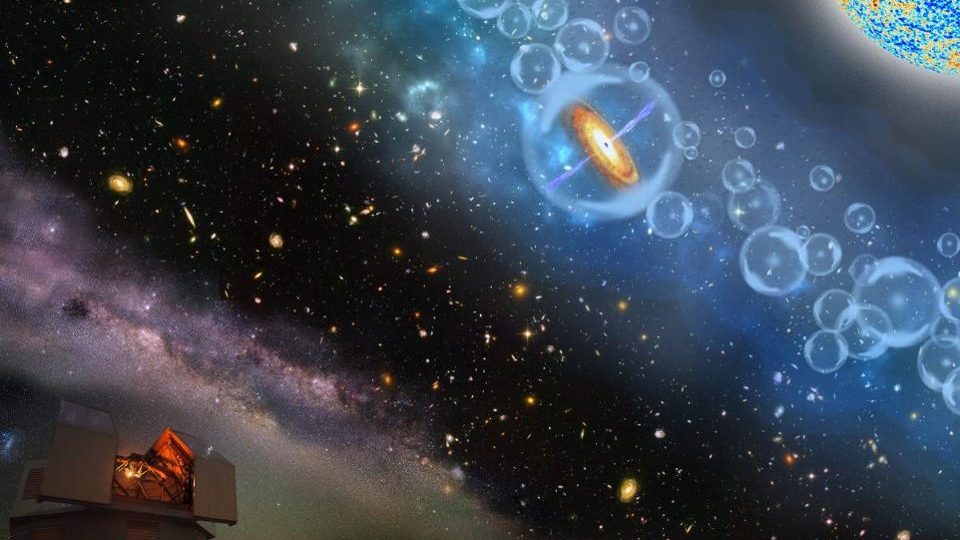Ask Ethan: Is the Universe rotating?
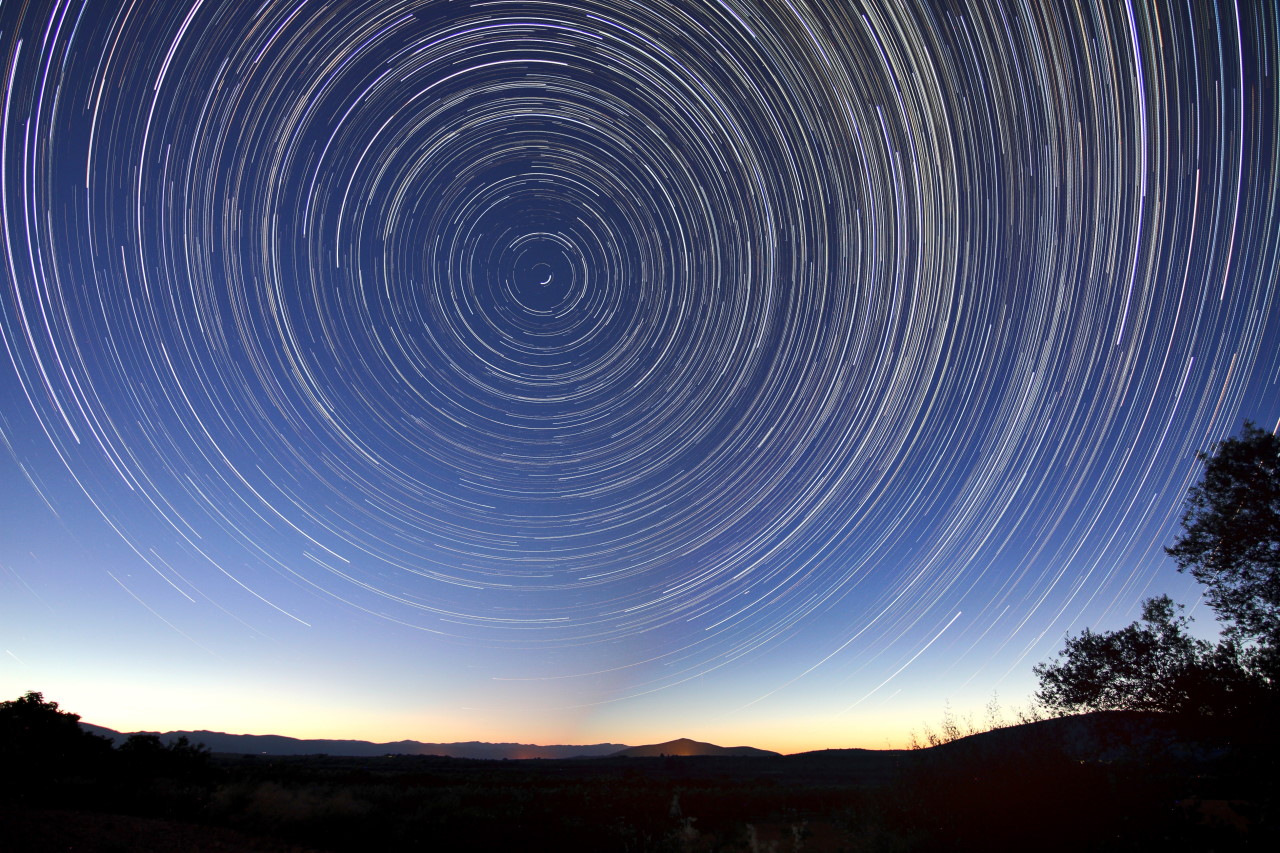
- When we look out at the Universe, we can see objects in all directions, spanning tens of billions of light-years in terms of their distance from us.
- The farther away an object is, the faster it appears to move away from us, with the standard explanation being that the fabric of space is expanding, and we’re seeing the line-of-sight result of that.
- But it’s also reasonable to ask, if farther galaxies recede faster, could they have correspondingly large transverse motions, as well? And would that mean the Universe is rotating as a result? It’s a fascinating question worth exploring.
Every time we take a look at the Universe, we’re only seeing a small portion of the information that’s out there. Looking out at a distant object, like a galaxy or quasar, we can determine how far away it is, measure its apparent brightness and apparent size, and also determine how severely its light is redshifted. That redshift gives us a fascinating piece of information: how quickly, mostly due to the expansion of the Universe, does this galaxy appear to be receding from us?
But you might also wonder, if distant objects appear to be receding from us very quickly along our line-of-sight, if they also have large transverse (or side-to-side) motions as well? If they do, instead of expanding, could the Universe be rotating? And, if so, what would the consequences of that be? That’s what Mike DePaulo wants to know, who writes in to ask:
“I enjoy reading your articles on the Universe. Have you ever been asked the question, ‘is the Universe rotating?'”
It’s a very clever idea, and one that’s absolutely worth diving into. Let’s find out!
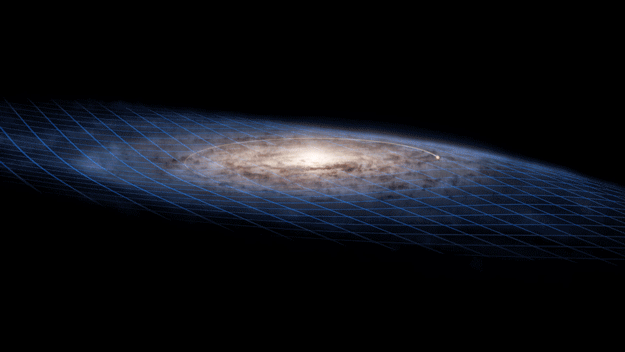
From our perspective within the Universe, it’s important to remember what we both can and can’t directly observe. When we look at the light from a distant object, we’re unable to see all of its properties. Sure, we can measure all of the photons that arrive from that object, and plenty of information is encoded in that.
- We see the sum total of all the starlight emitted from the stars inside.
- Any excited molecules or atoms, where the electrons cascade down from higher energy levels to lower ones, will also emit light, and that’s part of what we observe.
- Any neutral atoms or molecules that intervene between the emitted light and our eyes will absorb light; that signal also gets imprinted onto the light that we observe.
- The geometry of the Universe — i.e., the curvature of space everywhere along the line-of-sight to this object — also impact the light, and that affects both how bright and how large the object appears.
- And the expansion of the Universe, along with the relative motion of the emitting source with respect to us, also gets imprinted onto that light, changing its wavelength with either a redshift or a blueshift.
This gives us an incredible amount of information to work with, but missing in all of this is a vital piece of information that we’d love to have: how fast, in the directions perpendicular to our line-of-sight, is each object moving?

You have to remember just how vast the distances between galaxies are to understand why this is the case. In most instances, all but the closest galaxies are anywhere from tens of millions to tens of billions of light-years away. Even if a galaxy were moving incredibly fast through space — let’s say, somewhere around 10% the speed of light — the change in its position over time wouldn’t be observable. A galaxy that’s 1 billion light-years away that moves at 10% the speed of light in the transverse direction, over the timespan of a decade, would only change its position by 1 light-year.
We can measure changes of 1 light-year for some of the closest stars within our own galaxy, as we did for the star 61 Cygni: the first star observed to change its position over time. But for a galaxy that’s a billion light-years away, that would correspond to a change in its apparent position of just 0.2 thousandths of an arc-second over the timespan of a decade, a change that’s well beyond the current limits of modern astronomical technology.
Even Andromeda, the closest large galaxy to the Milky Way, when we compare the very first photograph ever taken of it (from 1888) to photos of it today, show that not a single star within it has moved in a fashion that’s detectable with current technology.
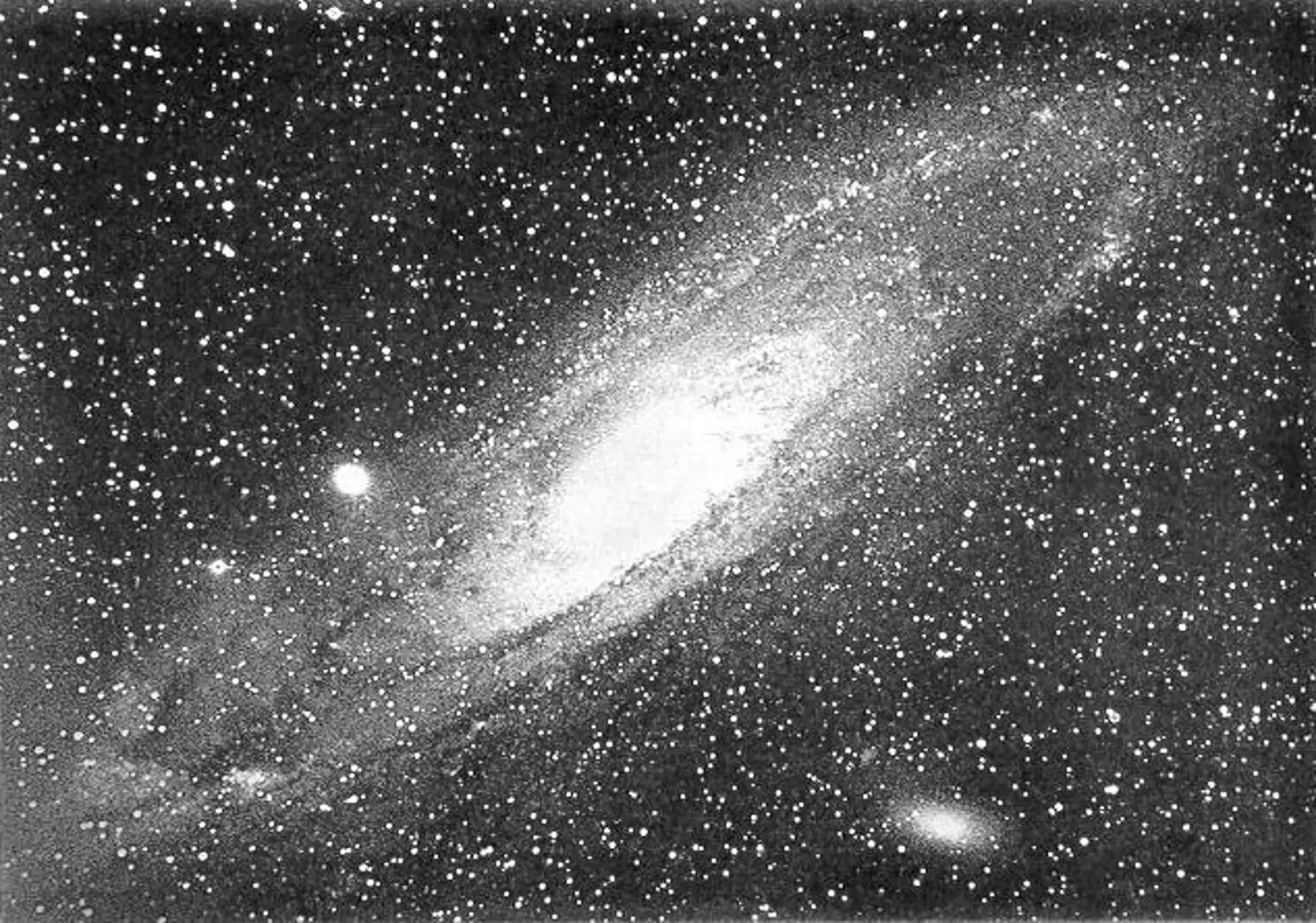
But just because we can’t observe something doesn’t mean it isn’t happening. You can easily imagine that in addition to the line-of-sight motions that we see, which get larger and larger the farther away an object is, there are also substantial transverse motions to the objects in the Universe. Sure, space appears to be expanding based on the motions we can infer from our line-of-sight observations, but could it be rotating, too? As long as the amount of rotation that exists is below the current limits set by our instruments, it’s an idea that cannot be ruled out observationally.
However, just because there isn’t any key evidence for a rotating Universe doesn’t mean we can’t say anything intelligent about the idea. In fact, from a theoretical perspective, we can derive how a rotating Universe would behave in the context of General Relativity, and then discuss what sort of consequences we’d expect would arise if the Universe were rotating.
Before we get to the actual Universe, though, let’s start with a simpler scenario to help us understand what rotation adds to the mix. Instead of a vast, expanding Universe, let’s begin by considering just a single, point mass that exists in space: a non-rotating black hole.

This species of black hole — a Schwarzschild black hole — is as simple as it gets. Any object that moves through the spacetime governed by this mass distribution will experience space “flowing” toward the center of the black hole, with the rate of “flow” increasing the closer you get to the black hole itself. In order to not fall into the black hole, you have to move more quickly, either away from the black hole or in a transverse direction to it (leading to an orbit around it), the closer you get.
Once you get too close, i.e., within the black hole’s event horizon, there’s no speed you can move at that will keep you from falling in. At this point, all you can do is approach the central singularity, and the closer you get to it, the greater the crushing gravitational forces will be. Macroscopic objects get torn apart into their constituent atoms; atoms get torn apart into their subatomic components; even protons and neutrons get torn apart into more fundamental quarks and gluons. Everything that crosses to the inside of the event horizon, eventually, simply adds to the mass of the central singularity, which itself is nothing more than a point.
But if you have a rotating black hole instead of a non-rotating black hole, everything behaves differently.
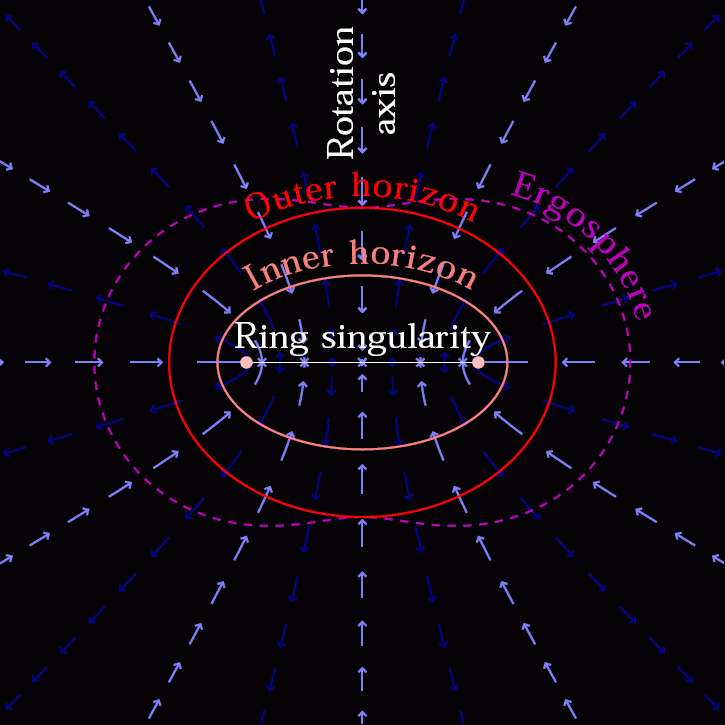
A single mass that also has a non-zero amount of intrinsic angular momentum to it creates a spacetime that’s very different from one with zero angular momentum. Instead of a Schwarzschild black hole, you get a Kerr black hole. To give you an idea of how much more complex this entity is, consider that the Schwarzschild solution was one of the very first solutions discovered in General Relativity, published less than two months after the complete theory was unveiled. The Kerr solution, meanwhile, wasn’t discovered until another 47 years had passed: until 1963. Its discoverer, Roy Kerr, is currently still alive at age 88.
A rotating black hole has a number of properties that are dramatically different from a non-rotating one.
- Instead of one event horizon, it has two: an outer event horizon and an inner event horizon; the former is the one from which light cannot escape.
- There’s also a region called an ergosphere outside of the event horizon: from this region, it’s theoretically possible to extract energy, even though the entire ergosphere always lies within what would be the Schwarzschild radius of this black hole were it not rotating.
- The singularity, instead of being a single point, is instead a 1-dimensional ring, with the diameter of the ring proportional to the amount of angular momentum the black hole possesses.
- And, perhaps most profoundly, if you were to pass through the circular region bounded by the ring singularity, you would exit the known Universe and enter what theoretical physicists know as an antiverse!
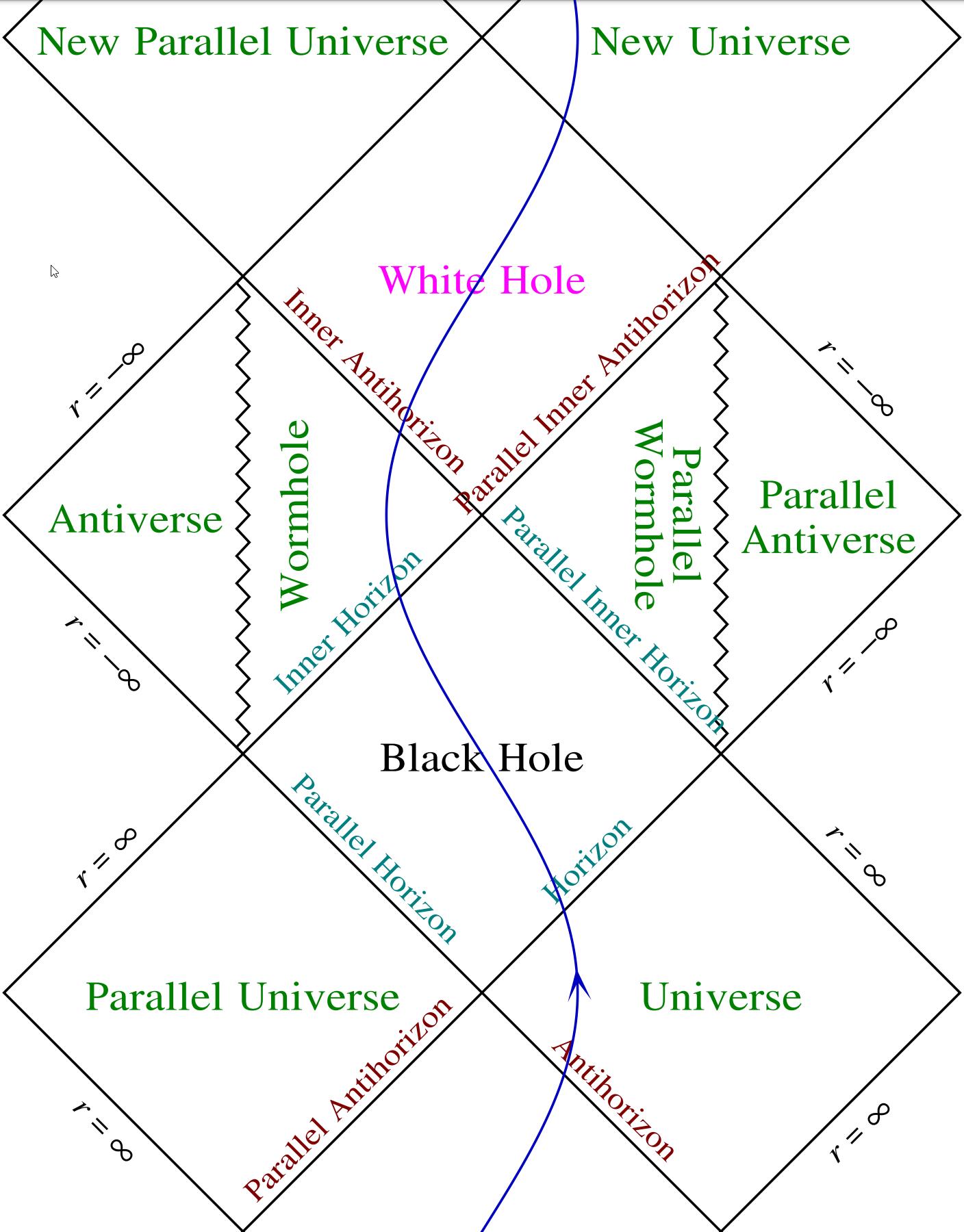
You might expect, therefore, that if we considered a Universe with a global, overall rotation, it would have some bizarre and unintuitive properties as well. Not only won’t you be disappointed, you might be amazed to learn that there is an exact solution for a rotating Universe within the context of General Relativity, and it was first worked out by mathematician and philosopher Kurt Gödel back in 1949. It’s known as the Gödel Universe, and while the forms of energy inside of it include both a uniform background of pressureless matter and a (negative) cosmological constant, where the matter swirls about a single rotation axis within the Universe.
One remarkable feature of this spacetime is that light emitted from any matter particle would first spiral outward, then form a circular cusp, and then spirals inward to reconverge back onto the original particle.
This implies that, at least in certain directions, you can only see outward for a finite distance, and that beyond that, you’d also be able to see yourself from an earlier time.
Perhaps the most remarkable property about this Universe, however, is that it mandates the existence within it of closed timelike curves.
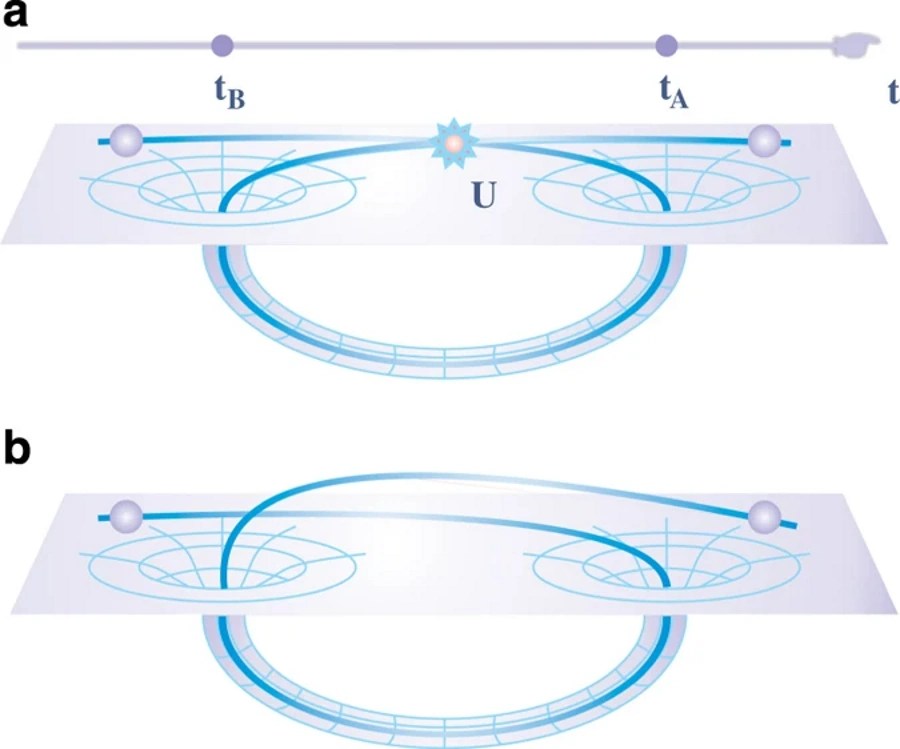
A closed timelike curve is a potentially pathological behavior in mathematical physics, because it means you can:
- leave your initial location,
- travel through space,
- arrive back at the same location you initially left from,
- and discover, when you arrived back, that your time coordinate was identical to the time at which you had left.
In other words, a Universe that has closed timelike curves within it necessarily implies that you can travel backward through time, to the past, with all of the paradoxical consequences that such a scenario brings along with it.
But rather than belabor what happens if, say, you kill your grandfather before one of your parents was even conceived, I’d rather reassure you that this version of a rotating Universe doesn’t describe our own reality. For one, the type of cosmological constant that our Universe can possess is stronger in magnitude and of the wrong sign to agree with the dark energy observations we’ve made. For another, the Gödel Universe isn’t allowed to expand, and we see it expanding. For yet another, there’s no Big Bang allowed in a Gödel Universe, we can’t see ourselves in the past, and there should be just as many objects moving toward us as away from us: something we don’t see at all.
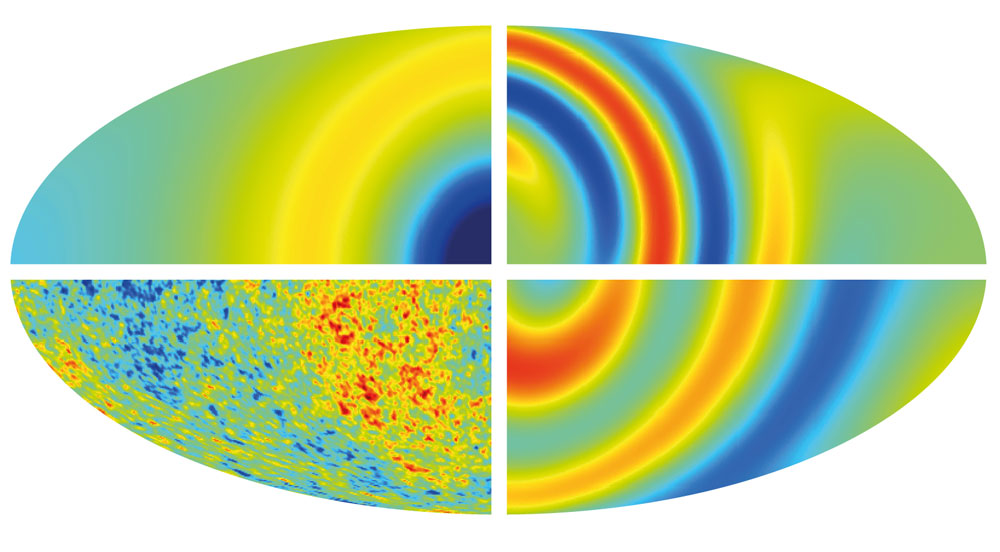
But perhaps the most important constraint we have on rotation within the Universe comes from measuring the earliest light we can observe: the leftover glow from the Big Bang itself. The most stringent analysis was done in 2016 by a team led by Daniela Saadeh, where the researchers noted that any rotation would necessitate a preferred “axis” for the Universe: one upon which it rotated about. This axis, if it existed, would lead to the Universe having different properties in different directions: an anisotropic Universe. In particular, we would see signals associated with vorticity in both the temperature and polarization data from the Cosmic Microwave Background.
Not only have we found extremely stringent limits on the total allowable amount of rotation in the Universe — the entire observable shebang must have rotated by less than a hundredth of a degree since the start of the hot Big Bang — but the Universe is incredibly isotropic: the same in all directions. In fact, the Universe is expanding the same in all directions to better than 1-part-in-100,000 from even the most weakly-constrained scenarios. In short, there’s not only no evidence that the Universe is rotating, but in every way we can measure the cosmos, it points to perfect isotropy: identical behaviors in all directions. The Universe is neither spinning nor stretched in any direction that we can observe.
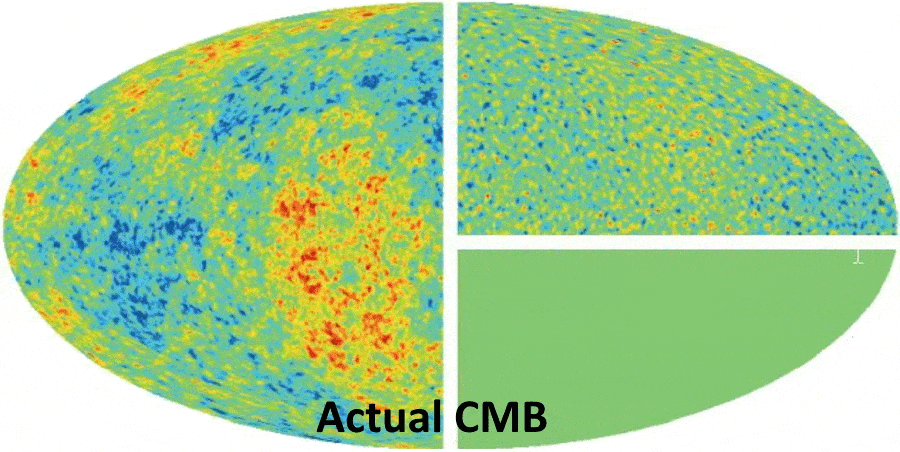
One of the most important things we can do, when it comes to understanding the Universe that we inhabit, is to explore even the wildest theoretical possibilities out there. By doing so, we can extract concrete, quantitative predictions that arise from each and every unique scenario. This simultaneously gives us something to search and hope for, while at the same time, it enables us to constrain how valid, viable, or relevant for our Universe such a scenario could be. In the case of a rotating Universe, the evidence is consistently and strongly against it, but it’s also important to keep investigating this possibility to the best precision available.
In fact, as observations of the Universe continued to improve with time, Gödel himself would frequently ask, “is the Universe rotating yet?” Today, with the greatest confidence ever, we can assert that not only isn’t it rotating, but the very idea that its properties could be different in any one direction compared to the others is incredibly restricted. We have to always be aware of what assumptions we’re making, and also how well-tested those assumptions are, as any violation of what we expect could rattle or even shatter the foundations upon which we’ve constructed our conception of reality.
Fortunately, the assumption that the Universe is the same in all directions has been tested to the greatest precision ever, and no spinning, stretching, or any form of rotation has ever been found. The Universe, in theory, could be rotating, but in practice, the data simply tells us this isn’t the case.
Send in your Ask Ethan questions to startswithabang at gmail dot com!
